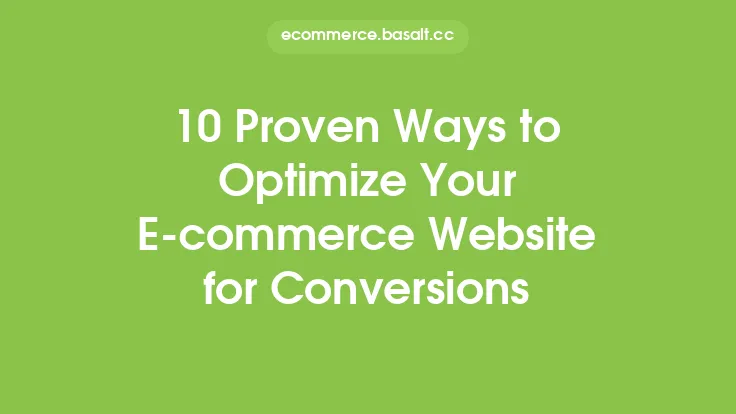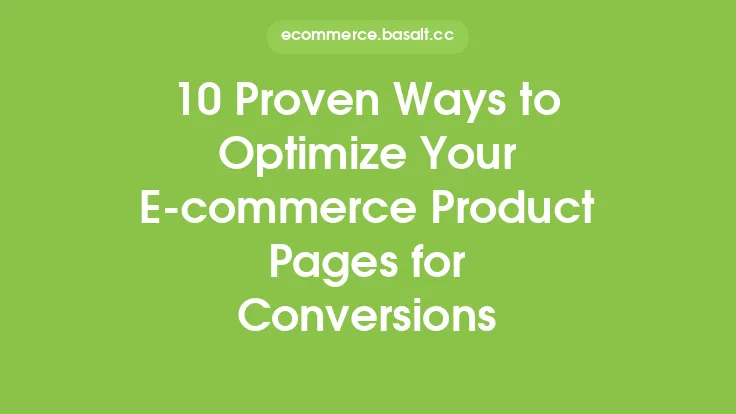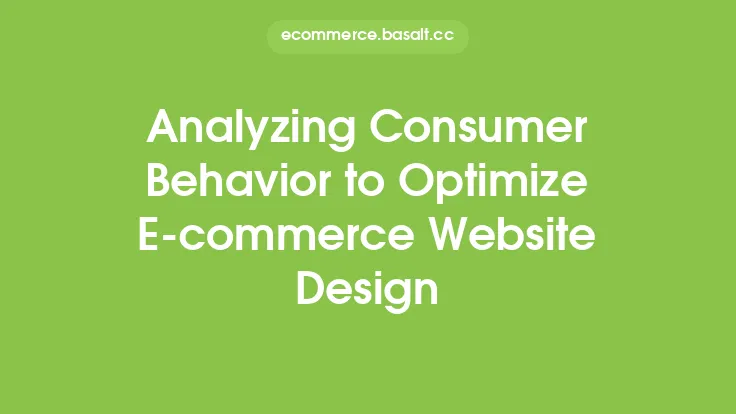When it comes to e-commerce marketing, one of the most critical aspects of a website is its ability to convert visitors into customers. While there are many strategies to achieve this, one often overlooked yet highly effective approach is to focus on user experience (UX) design. UX design is the process of creating products that provide meaningful and relevant experiences to users, and when applied to e-commerce sites, it can significantly boost conversions. In this article, we will explore the importance of UX design in e-commerce and provide insights on how to leverage it to increase conversions.
Understanding User Experience (UX) Design
UX design is a human-centered approach that aims to create products that are intuitive, easy to use, and provide a seamless experience to users. It involves understanding the needs, behaviors, and motivations of users and designing products that meet those needs. In the context of e-commerce, UX design is crucial as it can make or break the user's decision to make a purchase. A well-designed UX can guide users through the buying process, reduce friction, and increase the chances of conversion.
Principles of UX Design for E-commerce
There are several principles of UX design that are essential for e-commerce sites. These include:
- Clarity: The site should be easy to navigate, and the content should be clear and concise.
- Consistency: The design should be consistent throughout the site, including the layout, typography, and color scheme.
- Feedback: The site should provide feedback to users, such as confirmation messages or loading animations, to let them know that their actions are being processed.
- Error Prevention and Recovery: The site should be designed to prevent errors from occurring and provide a clear recovery path when errors do occur.
- User Control and Freedom: The site should give users control over their actions and allow them to easily undo or cancel actions.
The Role of UX Design in Conversion Rate Optimization
UX design plays a critical role in conversion rate optimization (CRO) as it can help to reduce friction, increase user engagement, and guide users through the buying process. A well-designed UX can:
- Simplify the buying process: By reducing the number of steps required to complete a purchase, UX design can make it easier for users to buy.
- Reduce bounce rates: By providing a clear and concise navigation, UX design can reduce bounce rates and keep users engaged.
- Increase user trust: By providing a professional and trustworthy design, UX design can increase user trust and make users more likely to make a purchase.
- Improve user experience: By providing a seamless and intuitive experience, UX design can improve user satisfaction and increase the chances of repeat business.
Best Practices for Implementing UX Design in E-commerce
To implement UX design in e-commerce, there are several best practices to follow. These include:
- Conduct user research: Understand the needs, behaviors, and motivations of your target audience.
- Create user personas: Develop personas to guide the design process and ensure that the site meets the needs of your target audience.
- Develop a wireframe: Create a wireframe to visualize the site's layout and navigation.
- Test and iterate: Test the site with real users and iterate on the design based on feedback.
- Use analytics: Use analytics to track user behavior and identify areas for improvement.
Common UX Design Mistakes to Avoid
There are several common UX design mistakes that can negatively impact conversions. These include:
- Poor navigation: A site with poor navigation can confuse users and make it difficult for them to find what they are looking for.
- Too much clutter: A site with too much clutter can overwhelm users and make it difficult for them to focus on the key message.
- Slow loading times: A site with slow loading times can frustrate users and increase bounce rates.
- Lack of mobile optimization: A site that is not optimized for mobile devices can provide a poor user experience and reduce conversions.
Measuring the Success of UX Design
To measure the success of UX design, there are several metrics to track. These include:
- Conversion rates: The percentage of users who complete a desired action, such as making a purchase.
- Bounce rates: The percentage of users who leave the site without taking any further action.
- Average order value: The average amount spent by users in a single transaction.
- User satisfaction: Measured through surveys or feedback forms, user satisfaction can provide insights into the effectiveness of the UX design.
- Return on investment (ROI): The revenue generated by the site compared to the cost of designing and implementing the UX design.
Conclusion
UX design is a critical aspect of e-commerce marketing, and when done correctly, it can significantly boost conversions. By understanding the principles of UX design, applying best practices, and avoiding common mistakes, e-commerce sites can provide a seamless and intuitive experience to users, guide them through the buying process, and increase the chances of conversion. By measuring the success of UX design through metrics such as conversion rates, bounce rates, and user satisfaction, e-commerce sites can continually iterate and improve the user experience, leading to increased conversions and revenue.





